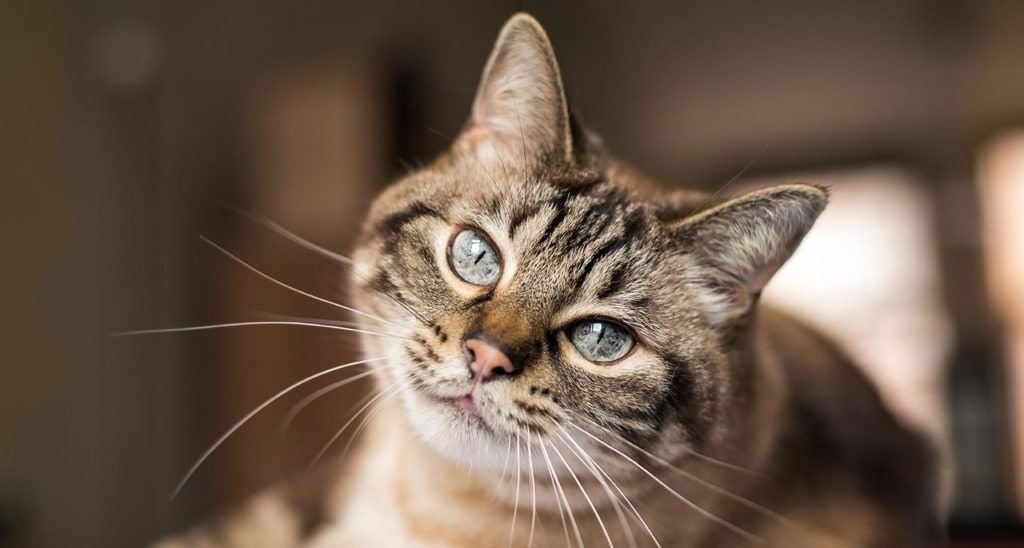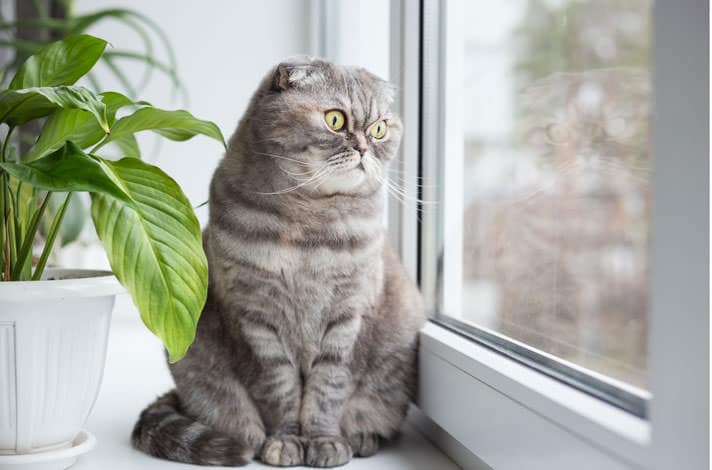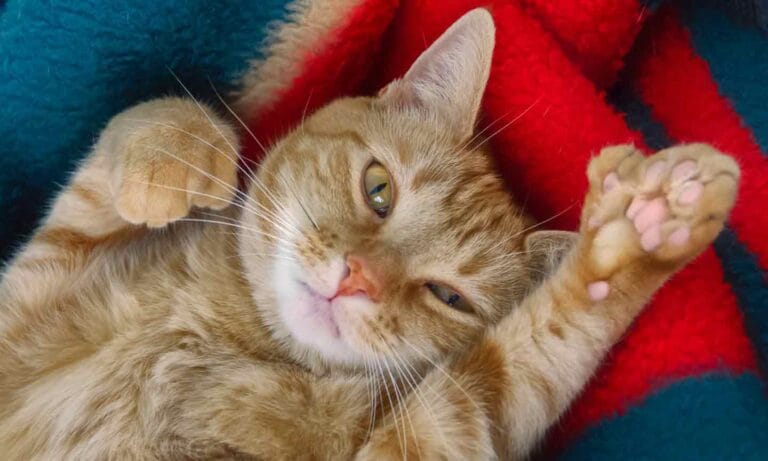You know your cat, right? You know how to interpret every distinctive meow, mew and yeow. You know how he stretches right before he falls asleep. And you know he will suddenly materialize when it’s time for dinner. Cats are incredible animals, and unique in so many ways, from the shape of their eyes, to their specialized taste buds, to the long-debated reasons that they purr.
Just in case you need a few reminders why they’re such amazing creatures and companions, here are 10 things that you might not know about cats—and about cat owners. Because you’re pretty cool, too, you know.
1. Cats’ eyes reveal the hunter inside.
Other than David Bowie, cats might have the most distinctive-looking eyes on the planet. And those unique vertical pupils can do more than make your cat look extra disappointed while he sits on the windowsill, judging you.
Scientists from the University of California-Berkeley studied the pupils of 214 different land animals and determined that the shape determined a lot about their lifestyles, especially when it comes to predatory behavior. Those with vertical pupils, like domestic cats, tend to ambush their prey. “For species that are active both night and day, like domestic cats, slit pupils provide the dynamic range needed to help them see in dim light, yet not get blinded by the midday sun,” lead author Martin Banks said in a statement. Maybe, but that still doesn’t explain David Bowie.
2. Cats don’t only purr when they are happy.
Every cat owner loves to hear their pet purring beside them, like a contented little Roomba. But the idea that cats purr because they’re happy or satisfied may not be entirely accurate. Yes, they purr when they’re being petted or nursing their kittens, but they also purr in stressful situations—which has led to an ongoing debate about why they do it and what purpose it serves. Researchers have determined that cats purr at frequencies between 25 and 150 Hertz, a frequency range that “can improve bone density and promote healing.”
According to Leslie Lyons, an assistant professor at the School of Veterinary Medicine at the University of California, Davis, cats may purr as a way to stimulate their bones and muscles without expending any real energy or stressing their bodies. “Although it is tempting to state that cats purr because they are happy, it is more plausible that cat purring is a means of communication and a potential source of self-healing,” Lyons told Scientific American.
3. The oldest living cat is 26 years old.
According to Guinness World Records, a 26-year-old cat named Corduroy is currently the oldest living domestic cat.
Corduroy recently claimed the honor of being old and alive after the death of Tiffany Two at the age of 27 years, 2 months and 20 days. Corduroy needs to hang on for another decade-plus if he wants to take the all-time honor, though. The oldest known domestic cat was named Creme Puff, and he lived to be an astounding 38 years, 3 days old. The average domestic cat lives to be 15.
4. Cats are better hunters than dogs.
I recently saw a kid in an airport who was wearing a T-shirt that said “Cats Rule, Dogs Drool,” which is more accurate than you think. Cats do rule, at least from an evolutionary perspective.
A recent study of more than 2,000 fossils showed that members of the cat family (felids) were better hunters and more capable of survival than their dog (canid) counterparts. The study, published in the journal PNAS, found that cats out-fought and out-hunted dogs, making the most of the available resources. That led to a significant decline in the number of wild dog species that survived. “The arrival of cats to North America had a deadly impact on the diversity of the dog family,” the report’s lead author, Dr. Daniele Silvestro, says.
5. Cats really don’t care to listen to you.
“Mr. Sniffles. Mr. Sniffles? MR. SNIFFLES!” You know your cat knows his name, your cat knows that he knows his name, and you both know that he’s ignoring you. Researchers know it, too, and have tested it by playing cats recordings of their names being spoken aloud by four strangers and their owners. Although cats displayed behavior indicating that they knew their names were being called, they still chose not to respond, even to their owners.
The study, which was published in the journal Animal Cognition, suggested that this was because cats, unlike dogs, were not domesticated to listen to humans, or to try to please them. “Historically speaking, cats, unlike dogs, have not been domesticated to obey humans’ orders,” the authors wrote. “Rather, they seem to take the initiative in human-cat interaction.” LOOK AT ME, MR. SNIFFLES! LOOK AT ME.
6. There is a right way to pet your cat — and a very, very wrong way.
According to researchers from the University of Lincoln, cats prefer being touched on their faces, “especially around their lips, chins and cheeks, where they have scent glands.” The worst place to pet a cat is at the base of the tail, which the researchers equated to “a cat erogenous zone” (there’s a phrase you didn’t expect to read today), which can be overstimulated to the point of being uncomfortable.
The scientists came to this conclusion by attempting to pet 54 different cats on varying parts of their body and, although their findings are fascinating, it’s more interesting that petting cats for a living might be a viable line of work.
7. Not all cats love catnip.
In the movie “The Hangover,” bearded weirdo Alan confidently says that tigers love pepper, but hate cinnamon. Another thing that tigers love? Catnip. The leaves and stems of the catnip plant can make cats—any cat from your domesticated pal to lions and tigers—go out of their minds for roughly 10 minutes.
According to Scientific American, a cat’s reaction to the herb is determined by its genetics: Between 20 percent and 30 percent of cats are immune to its effects. Also, catnip has no effect on cats younger than 6 months old, so there goes our plan to host a Kitten Rave this weekend.
8. Cats can’t taste sweetness.
Cats are quite possibly the only mammal who can’t taste sweetness. Cats, including lions, tigers and the one quietly scratching at your curtains, lack the amino acids that would make the DNA for the gene allowing them to detect sweet tastes. The deficiency, if that’s indeed what it is, might be related to the fact that cats are primarily carnivores, who are descended from a long line of meat-eaters. They have no need to detect the sweetness that is found in carbohydrates or plant-based sources of food. “They’re lucky,” biochemist Joe Brand says. “Cats really have bad teeth as it is.” So maybe that explains why tigers hate cinnamon.
9. Women dig a man with a cat.
Gentleman, owning a cat might make you more attractive to the ladies.
In a study conducted by pet researcher Dr. June McNicholas, women reported being more attracted to men who liked animals, but male cat owners were also perceived as being nicer and more caring. The study’s findings seem to support that, at least when it comes to the way men display their affections for their feline companions: Single male cat owners were more likely to make real sacrifices for their cats, including giving up a vacation to avoid having to board their pets, or even choosing their cats over their romantic partners. OK, so maybe that last part isn’t as sexy as the whole caring thing.
10. Cat owners have a real zest for life.
There are real differences between Cat People and Dog People. A psychologist at the University of Texas-Austin surveyed more than 4,500 individuals to determine whether they were dog people, cat people, neither or both. He also gave them a 44-question test to assess their personalities. He and his team concluded that those who were exclusively cat people were more introverted, displayed less warmth and were more neurotic than their dog-owning counterparts.
But wait! Cat owners were also determined to be more “open,” a trait that was described as involving “a general appreciation for art, emotion, adventure, unusual ideas, imagination, curiosity and variety of experience.” But you already knew that you were cultured and had refined tastes, right?
Want to learn more about cats? Check out the video below:
By: Jelisa Castrodale
Share:









